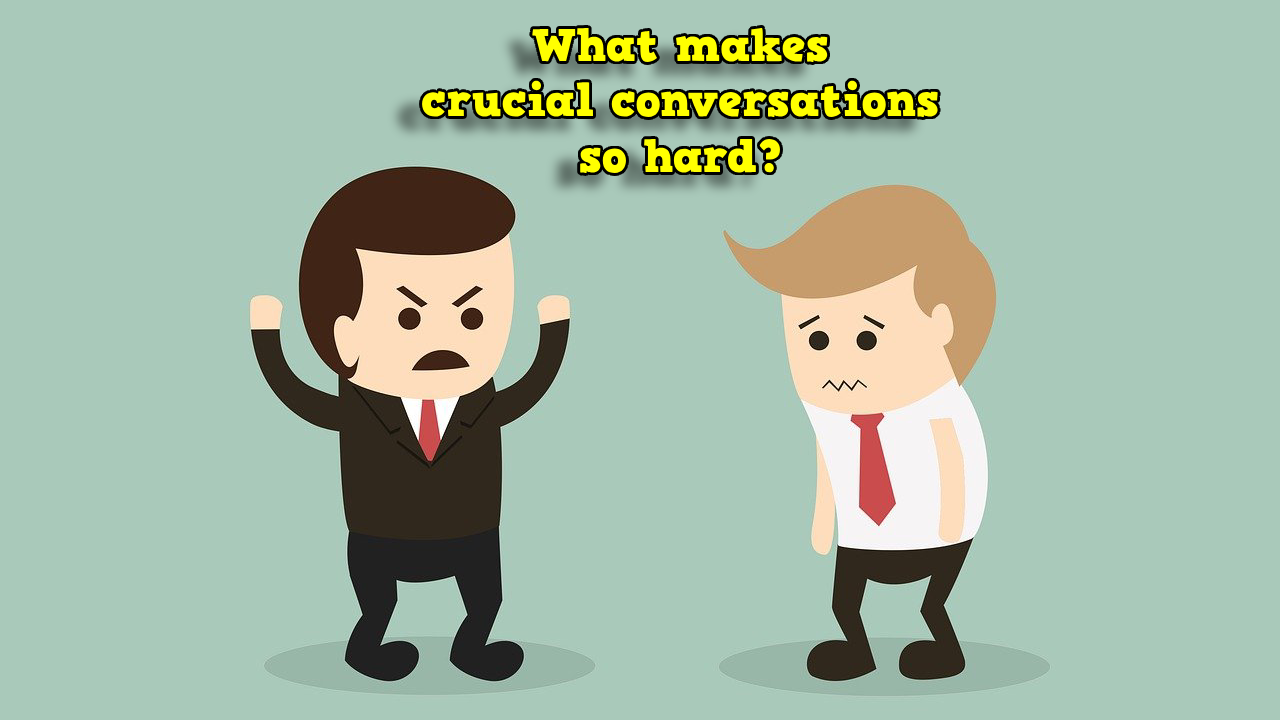What makes crucial conversations so hard?
Tips from the book ‘Crucial Conversations’ by Kerry Patterson, Joseph Grenny, Ron McMillan, and Al Switzler.

Recently, I finished reading the book ‘Crucial Conversations’ by Kerry Patterson, Joseph Grenny, Ron McMillan, and Al Switzler. It was recommended to me by my friend Pranav when I went to visit him last year. At the time, he was attending a workshop on the same topic at his company. The book claims that a few conversations have a massive impact on our lives. It provides a deeper analysis of why we often handle them poorly and provides some tools to improve at it.
What are crucial conversations?
Some examples of crucial conversations include giving feedback to the boss on a critical task, negotiating a promotion, handling minor or major disagreements with your partner, asking a friend to repay a loan, and many more. These conversations are also hard to master. During these conversations, opinions vary, stakes are usually high, and emotions are strong. More often than not, we are on our worst behavior during such conversations. While reading this book, I could think of so many important conversations I messed up.
At times, we prefer to avoid them. Just to ensure that we don’t spoil our relationship. This is not an ideal solution. In fact, not having such conversations can also destroy relations and cause us other harm. On the other hand, handling such conversations well can potentially strengthen our relationship even more.
Managing emotions
The key reason why we handle such conversations poorly is that emotions run strong during these conversations. During these peak emotional states, we do not think rationally. The key takeaway (and the most challenging part) from this book is to practice observing our emotional states at all times. People with very high emotional intelligence tend to handle these conversations quite well because they are aware of their feelings most of the time. Just this awareness is sometimes enough to bring us back to our rational mindset.
We know that emotions lead to actions. But what causes the emotions? We may think that our emotions are the results of our observations. We collect some facts (by seeing, hearing, etc.) from our environment, and that makes us feel what we feel. This is almost correct, except that the facts we collect are not enough to lead us to our emotions. Sometimes, we can feel differently even after seeing or hearing similar things at different times. It is the story we make (i.e., the interpretation of the facts) that triggers emotions.
The way to manage emotions is to separate facts from the story. For example, when we are angry or afraid, we should trace back that emotion and think about what made us angry or scared. What were the key facts we observed, and how much of it was not a fact, but rather our interpretation or interpolation of facts we observed? There can be many different stories for any given set of facts. Once we realize that, we start treating our story as a hypothesis rather than a fact and try to verify it. As the story changes, the emotions also change. This is much harder than it sounds because it relies on our ability to notice that we are ‘angry’ or ‘afraid’ in the first place. But once the emotions are taken care of, we can come up with many different ways to treat the other person with respect and, at the same time, verify our story.
If we still come to the same bad emotion after separating facts from stories, we should talk about what we feel and what led us to feel that way. This helps other people see us as rational beings. They can help us correct our story by providing more facts or a different point of view.
Creating safety
Managing our emotions can help with many important conversations. But there is at least one more person involved in such dialogue who may also be in a high emotional state. Once we bring ourselves to a rational thinking mode, we should also help others. It is essential to hear their honest opinions to get the best results. For example, if we are leading a team, it is crucial that our team members feel safe enough to point out critical errors in our decisions before it is too late. Or the other way around, we might want to warn our boss about something critical, who usually responds to feedback poorly.
The typical source of strong destructive emotions is that people don’t feel respected and safe. It is our job to make them feel safe. By giving feedback, we are not attacking our boss or questioning their authority. We need to make it clear to the boss.
One easy way to create safety is to just listen. People often feel misunderstood. This triggers the other bad feelings and then the wrong behavior. A simple way to make people safe is to stop thinking about the reply and listen to them. Repeat what they say (paraphrase or summarize) and mention if we observe them in a strong emotional state (but politely). It makes them feel respected. Help them notice their emotions and trace the path to that emotion. Help them bring to the rational mind as well. Most people, on their best behavior, contribute well during a dialogue.
Conclusion
The idea behind mastering the crucial conversations is not to win an argument, but rather to have a ‘dialogue’ that can help everyone. A dialogue is possible only when all participants escape their strong emotional states and act rationally. The first step is to be aware of the emotion and then trace the story (interpretation or facts we observed) that led us to that emotion. Finally, make others feel respected by just listening to them.
I absolutely loved this book. When I finished it, I realized I needed to improve my emotional intelligence and created a goal of tracking my emotional states. This will help me reduce making mistakes in upcoming crucial conversations.
My favorites
Video: Things to keep in mind while watching tech product reviews
Quote: "One of the best ways to persuade others is with your ears-by listening to them." – DEAN RUSK
